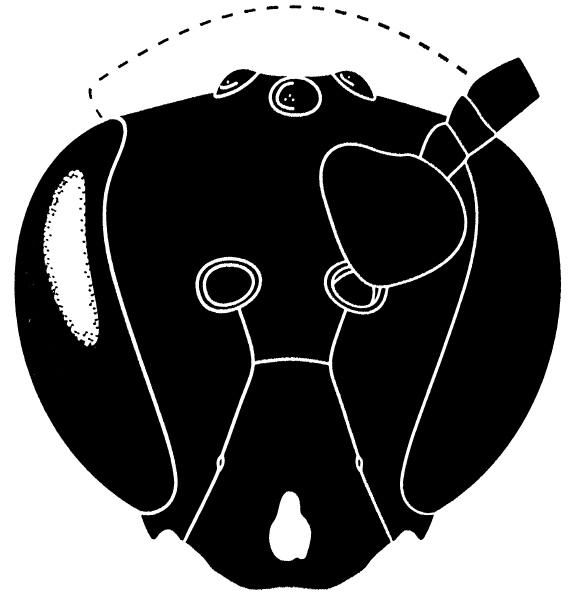Hylaeus in Hawaii

Hylaeus in Hawaii |

|
Hylaeus muranusIslands: HawaiiLocations: Hawaii - (Puu Puai, Saddle Rd., Volcano) Habitats: Montane wet forest Plants: Cheirodendron, Metrosideros Xerces: No info. Insects of Hawaii: Large bees with dark wings and reticulately rugose propodeum. Male with unique scape extremely dilated, nearly oval (similar to H. satelles; see remarks). Female entirely dark, with faint blue reflections on the metasoma. Hylaeus muranus, from Hawaii, and H. satelles, from Maui Nui, are sister taxa and differ in several morphological details. Both are members of the group with dark wings, the metasomal terga finely punctured, and relatively large body size (forewing length: H. muranus, ♂ 6.2-7.4 mm, n = 3; ♀ 7.1-7.8 mm, n = 11; H. satelles, ♂ 6.2-6.9 mm, n = 3; ♀ 6.9-7.7 mm, n = 4). Males of the two species have in common a distinct lower paraocular depression that is shiny along the eye; unmarked legs; a slender, reddish brown metasoma; and the scape strongly dilated. Hylaeus satelles has the scape slightly less dilated and circular in profile compared to the much wider and oval profile of the scape of H. muranus. The scape of H. muranus is the most extreme dilation seen among species in the Islands. In both sexes of H. satelles, the propodeum is sparsely sculptured with linear rugae at the base, if at all, whereas H. muranus is reticulately rugose over most of the basal area of the propodeum. Based on old specimens, the female of H. satelles has reddish yellow facial marks and light brownish pubescence on the mesosoma. The female of H. muranus has the face black and with pale, whitish pubescence. It also has faint bluish reflections on the metasoma and is somewhat less robust than H. satelles. Both sexes of H. muranus have the upper paraocular area and frons with shallow round pits about 1 pit width apart or less, whereas H. satelles has smaller, distorted, denser pits less than 1 pit width apart. Insects of Hawaii Volume 17 
UH/DOD: Hylaeus near military lands 
Other: |

|